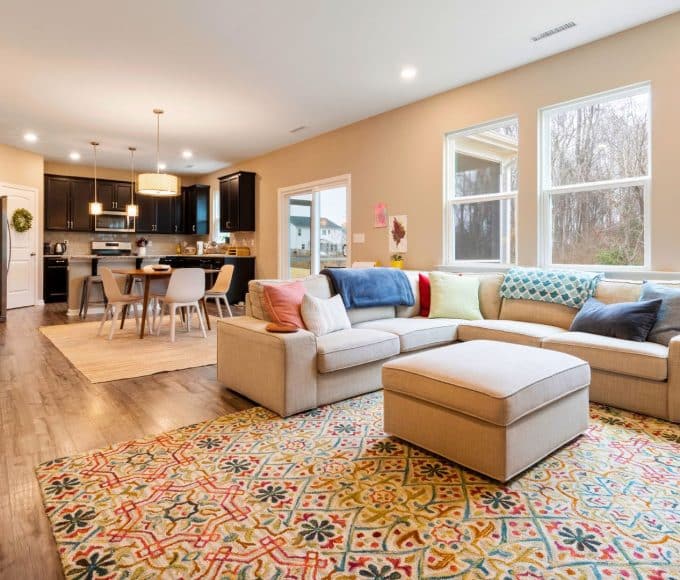Creating a harmonious and functional living space starts with the art of furniture arrangement. Arranging furniture can often feel like a daunting task, but with a few simple guidelines, it can be an enjoyable and creative process. In this guide we’ll walk through some must-know furniture arranging rules, turning what might seem like a chore into an opportunity to express your personal style.
Define Your Focal Point
Your focal point is going to act as your north star that you center the rest of the room around. This point could be a charming fireplace, a stunning piece of artwork, or even a large window with a beautiful view.
Once you’ve identified your focal point, orient your main seating furniture towards it. This is all about highlighting the best features of your room without overcomplicating the setup.
Consider the Traffic Flow
If you’re looking for an interior design tip for any and every space in your home, considering walkways is the most important tip to keep in mind. You want to ensure there’s ample space for people to walk through the room without tripping over furniture or feeling cramped.
Imagine hosting a lively get-together with friends. Everyone should be able to move freely from the sofa to the snack table without having to get through an obstacle course. Arrange your furniture in a way that allows for clear paths and avoids bottlenecks.
Create Conversation Areas
When setting up conversation areas, you should aim for intimacy and inclusiveness. Position chairs and sofas so they’re close enough for a comfortable chat without raising voices.
Rather than lining everything against the walls, try grouping seats in clusters to encourage interaction and make the room feel cozier. Don’t forget to add a coffee table or side tables to hold drinks, books, or a cheerful potted plant, making your space both functional and inviting.
Anchor Zones With Rugs
Rugs are like the unsung heroes of a well-arranged room. They define spaces, add warmth, and inject a dose of style. When placing rugs, ensure they’re large enough to fit under all the major furniture pieces in the area, such as sofas and chairs, to create a unified look.
A good rule of thumb is to leave about 18 inches of floor visible around the rug’s edges to frame the space nicely. Rugs not only anchor your zones visually but also provide comfort underfoot, making your room feel complete and thoughtfully put together.
While these rules can help you arrange your furniture, there’s no right or wrong way to do it. Don’t be afraid to get creative and try different arrangements until you find one that suits your style. For more home improvement tips, check out our post: Tips for Discovering Your Home’s Aesthetic
Furniture can be expensive, especially if they’re high quality. Therefore it is important to know how to maintain them, and make sure they last for a long time. Here are some tips on How To Extend the Lifespan of Your Furniture















